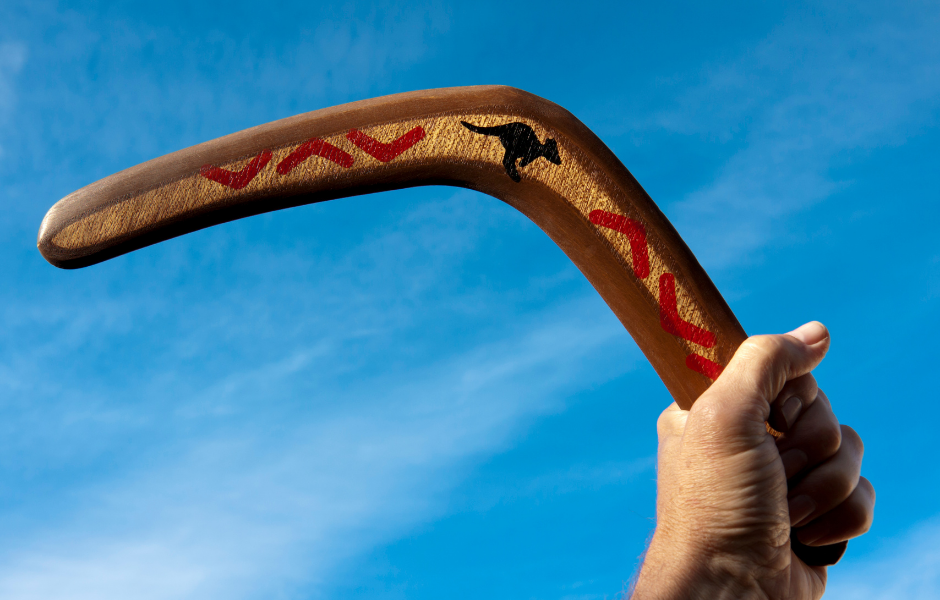
This children’s article, How do boomerangs come back? A kids’ guide to their science and stories, has been written for native English speakers and learners of English as a second or foreign language. It can help children practise reading and comprehension, learn useful vocabulary, and discover the science and history of boomerangs. Written by Sinead O’Carroll, an experienced English teacher and writer.
A clever flying tool
A boomerang is a curved piece of wood that can fly in a circle and return to the person who threw it. It might sound like magic, but it is really a clever use of science. Boomerangs have been used for thousands of years, especially by Aboriginal Australians. They were made for hunting, sport, and even music and dance.
The secret is in the shape
The shape of a boomerang is what makes it special. Most returning boomerangs have two curved arms joined in the middle. When you throw one correctly, each arm spins through the air like a tiny airplane wing. This creates lift, the same force that helps real airplanes fly. As the boomerang spins, one arm moves faster through the air than the other. This causes it to tilt and slowly turn back towards the thrower.
Not all boomerangs come back
Many people are surprised to learn that not every boomerang returns. Some were designed only for hunting and were straight, heavier, and meant to fly long distances. Returning boomerangs were mainly for practice, sport, or ceremonies.
Modern boomerangs and world records
Today, people all over the world throw boomerangs for fun and in competitions. There are world records for the longest return and the most accurate catch. Modern boomerangs are made from wood, plastic, or carbon fibre. Some are even designed on computers to fly in perfect circles!
A symbol of culture and skill
In Aboriginal culture, boomerangs are more than tools. They are symbols of skill, tradition, and connection to the land. Some are decorated with beautiful patterns and stories.
Museums around the world display ancient boomerangs that show how skilled their makers were thousands of years ago.To learn more about Aboriginal tools and art, you can visit the Australian Museum’s website.

Article vocabulary list
- Boomerang – A curved tool that can return to the thrower when thrown correctly.
- Airplane wing – The part of a plane that helps it lift into the air.
- Lift – The upward force that helps something fly.
- Tilt – To move or lean at an angle.
- Ceremonies – Special events or celebrations with meaning or tradition.
- Carbon fibre – A strong, lightweight material used in modern tools and sports equipment.
- Culture – The ideas, traditions, and art shared by a group of people.
- Tradition – A custom or belief passed down through generations.
Comprehension questions
Just click the plus (+) to see the answer
1. What makes a boomerang come back?
a) Its colour
b) Its curved shape and spinning motion
c) The way it is caught
Answer: b) Its curved shape and spinning motion
2. Where did boomerangs first come from?
a) Japan
b) Australia
c) South America
Answer: b) Australia
3. What force helps boomerangs stay in the air?
Answer: Lift
4. True or false: All boomerangs are made to return to the thrower.
Answer: False
5. What are modern boomerangs sometimes made from?
a) Metal
b) Carbon fibre and plastic
c) Stone
Answer: b) Carbon fibre and plastic
6. What do boomerangs represent in Aboriginal culture?
Answer: Skill, tradition, and connection to the land
Sinead is a writer and EFL teacher with eight years’ experience. She’s a native English speaker who loves making news stories fun and easy to understand for children around the world. Her passions include travel, animals, and helping to make the world a kinder, more sustainable place.




